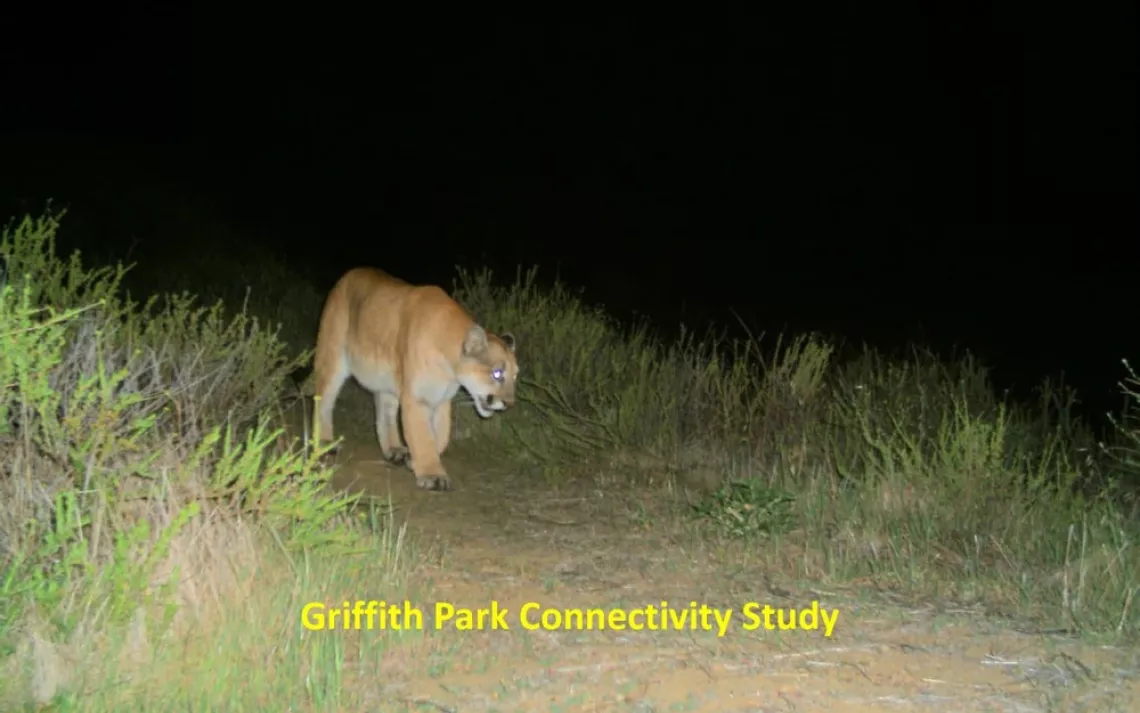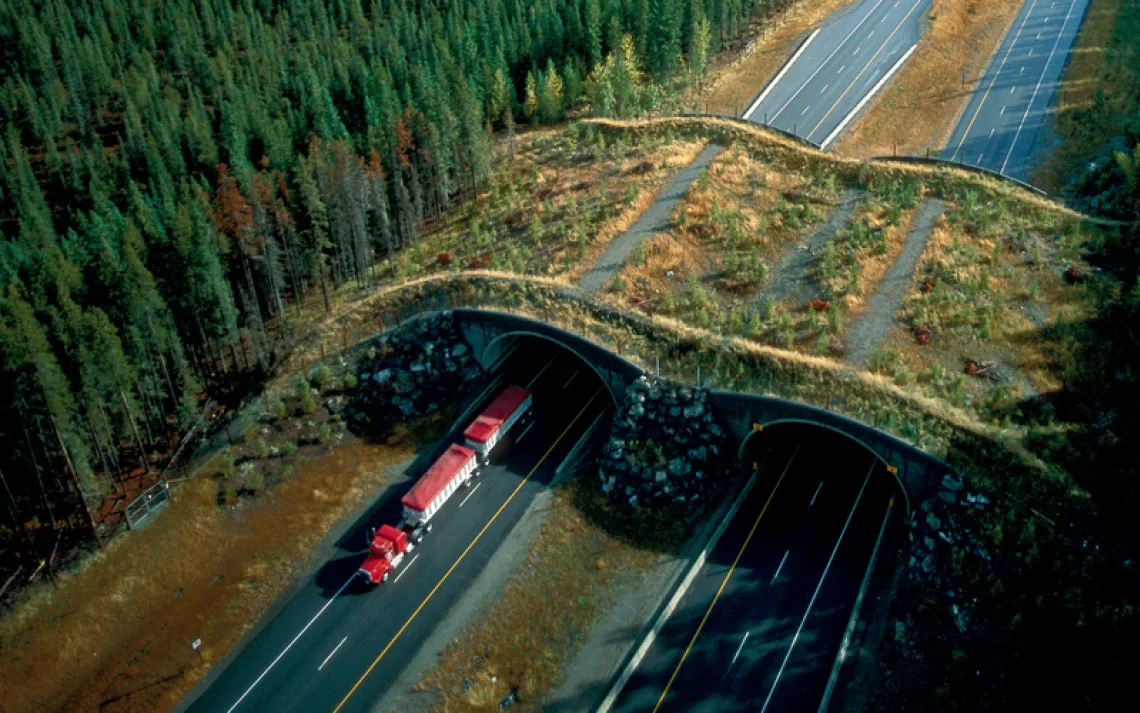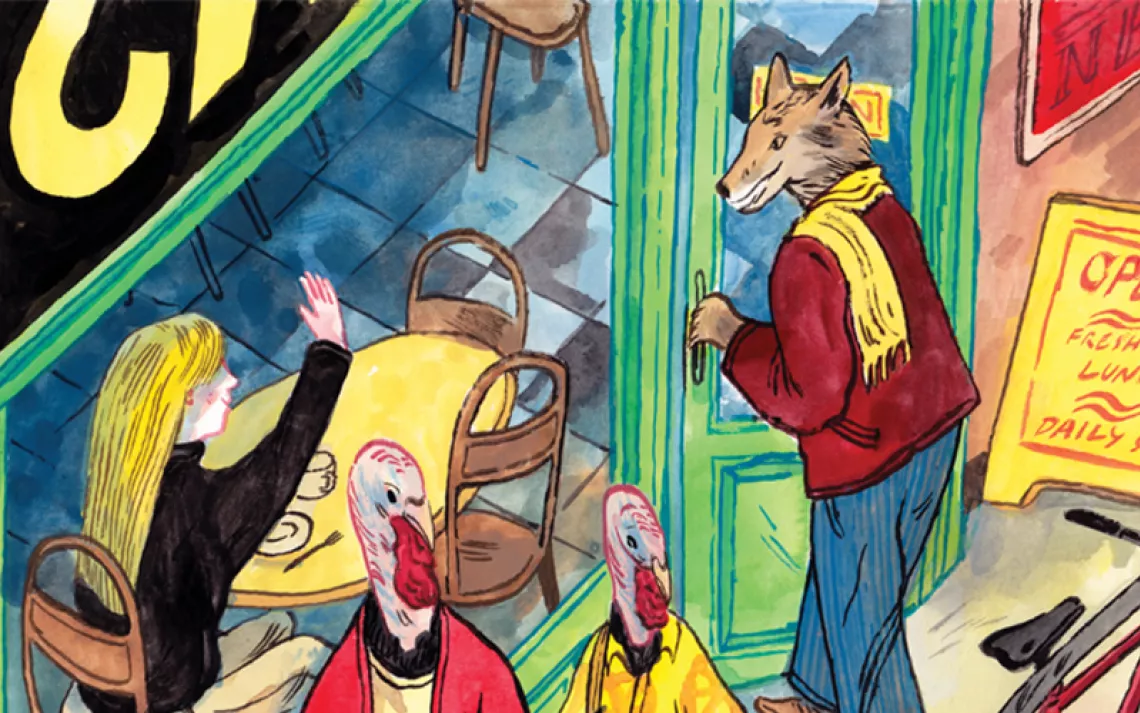Will L.A.'s Trapped Mountain Lion Ever Get Out?
A big cat is marooned in Los Angeles. Getting there was dangerous. Getting back might be deadly.

Since 2012, visitors to Griffith Park in Los Angeles, just 5 miles from the Hollywood Hills, have shared the 4,000 acre green space with a wild mountain lion. If that sounds dangerous, that’s because it is. Yet, there is no panic. There is no witch hunt. In fact, there is motion afoot to accommodate the lion in its new home.
P-22, as the cat is known, is not the first wild animal to show up in developed Los Angeles, but the span of his journey makes him rare. To get to Griffith Park, experts believe he had to traverse the nightmarishly busy 405 and 101 freeways. The wonder doesn’t lie with the fact that a wild animal would willingly encroach on “human territory,” but rather with the fact that he survived the trek.
The greater Los Angeles area abuts the Santa Monica Mountains National Park, with Griffith Park effectively an extension but for the severance provided by the 405 and 101. Wild animals get struck by cars at a surprising clip. Less directly, the freeways isolate populations leading to dangerous levels of inbreeding. Mountain lions in the area have begun to exhibit strange and sometimes aggressive behavior. Experts also fear an influx of debilitating physical maladies, as previously observed in an isolated population of Florida panthers. When Los Angeles boomed in the 1950’s, few were concerned with the ecological impact of severing an important habitat in two. In retrospect, redlining Southern California’s wild spaces threatened local mountain lion populations on a physical and genetic level.
The push for a wildlife overpass over the 101 is gaining more traction of late, but it’s a stretch to call the concept “new.” Conservationists have lobbied for a natural bridge for nearly a decade, but it’s tough sledding. The bridge, admittedly, would be expensive. Unofficial estimates place the cost at about $4 million, and the project was recently denied a federal grant. Yet, concerned groups still hold out hope that the proposed bridge can get off the ground with grassroots fundraising.
Supporters have precedents to cite. Banff National Park in Alberta is the gold standard for effective wildlife crossings. The park presents a slight equivalency to the situation in Los Angeles. That is, in Banff, roadkill has been a challenge for decades. Since 1996, Parks Canada has installed 38 underpasses and 6 overpasses at strategic points along the Trans-Canada Highway. Banff has also pioneered research into the palpable benefits of wildlife crossings. The results are encouraging. According to Parks Canada, wildlife collisions in the park have dropped more than 80% since the crossings were installed.
Happily, Banff is just the cream of an ever-growing crop. Domestically, ecopassages defend against roadkill in Florida, Montana, and Colorado. On foreign soil, the over 600 “ecoducts” in the Netherlands create a model of harmony between wildlife and civilization. Christmas Island in the Indian Ocean boasts dozens of “crab grids” that spare the island’s millions of migratory crabs from a decidedly crunchy fate.
Worldwide, it is virtually impossible to calculate the protection afforded to wildlife by ecopassages. Wildlife bridges treat a symptom. They are not the end-all be-all of harmony between nature and civilization. Still, we hope that the cougar bridge near Los Angeles can come to fruition, and P-22 can live a full, natural life whether in Griffith Park or without. Symptomatic treatment is better than none at all.
 The Magazine of The Sierra Club
The Magazine of The Sierra Club







